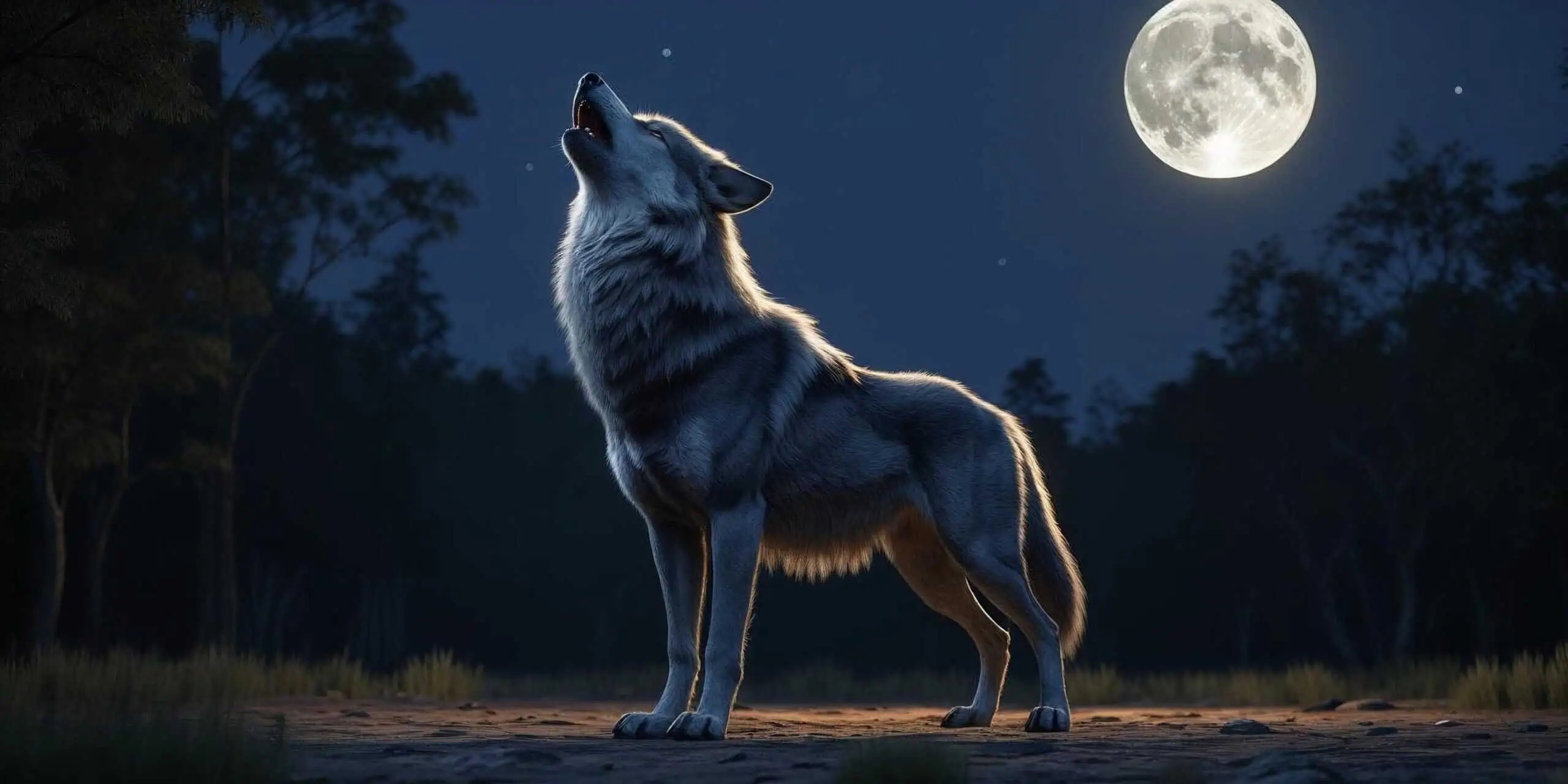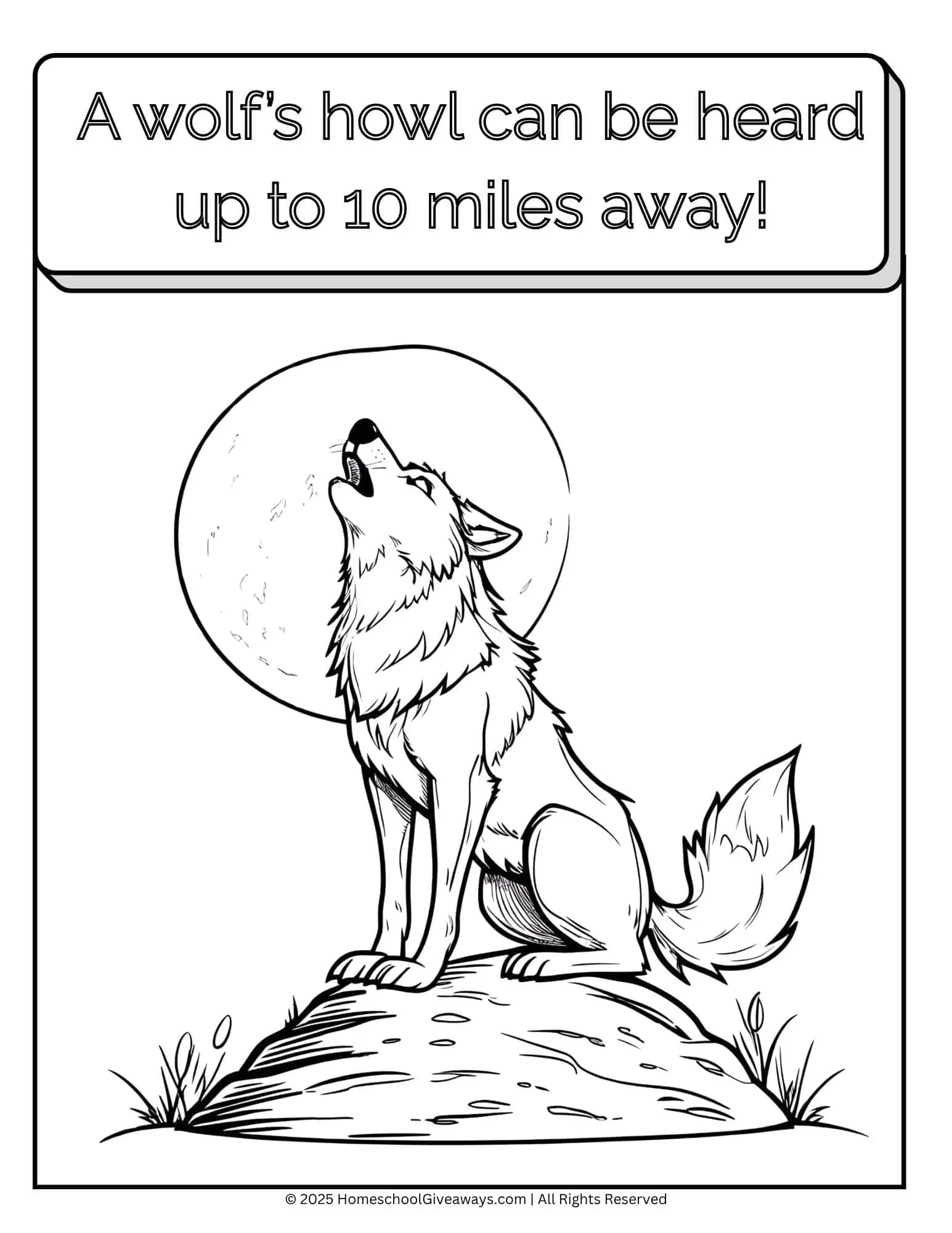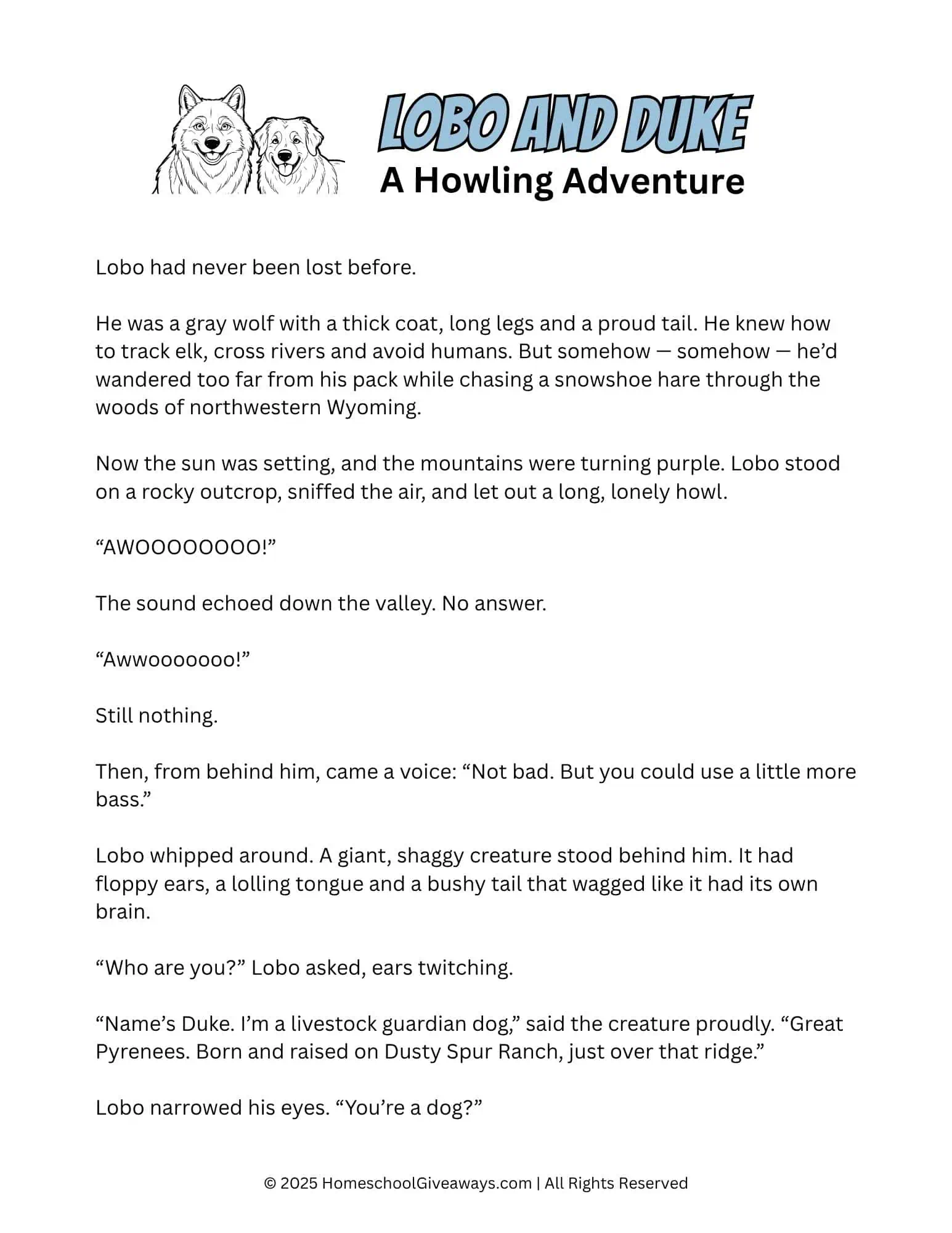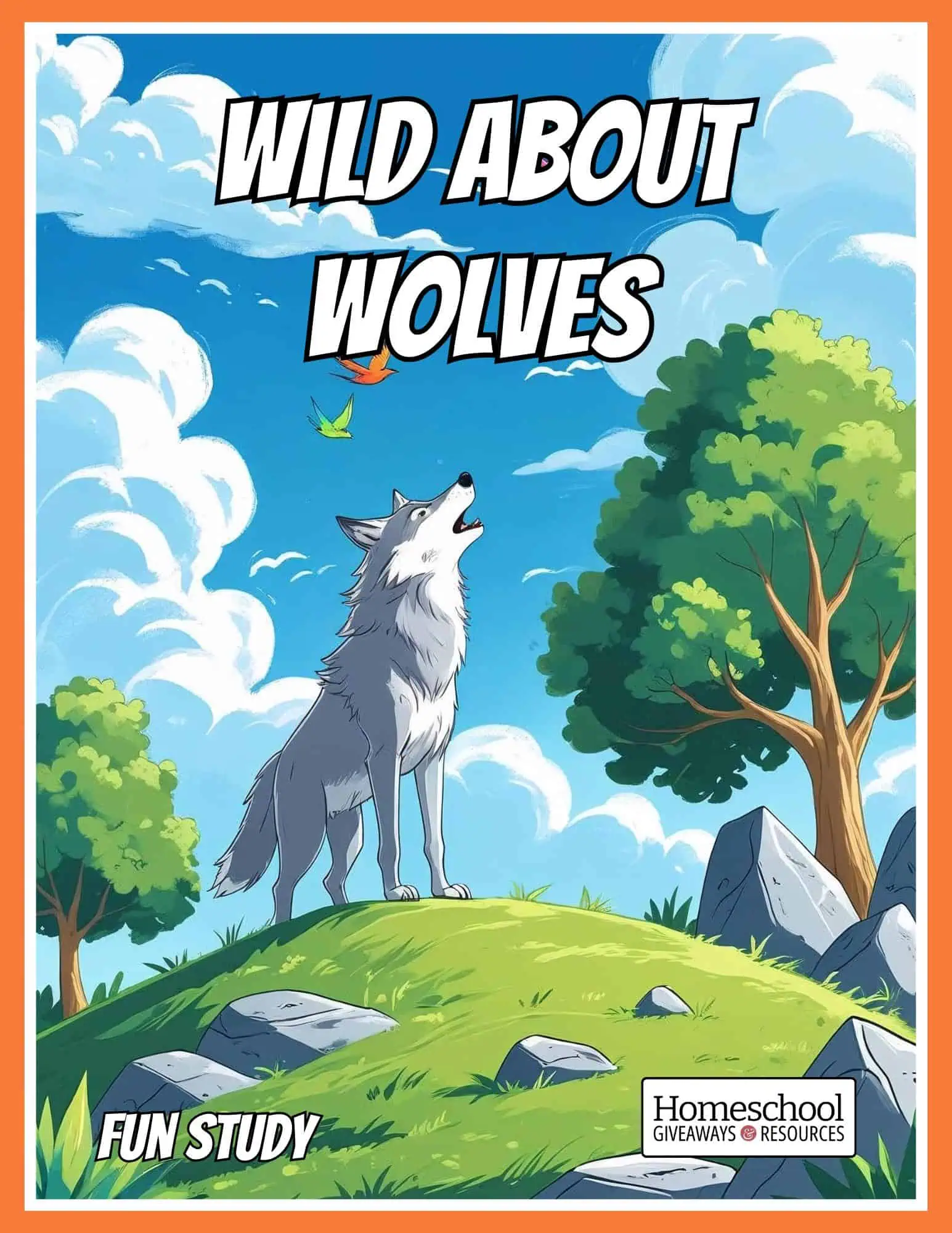Why Do Wolves Howl? Fun Facts and Activities for Kids
Published:
August 11, 2025

Contributor:
Charis King
Disclosure: This post may contain affiliate links, meaning if you decide to make a purchase via my links, I may earn a commission at no additional cost to you. See my disclosure for more info.
Ever heard a wolf howl and wondered what it’s saying? You’re not alone. If you’ve ever asked, “Why do wolves howl?” you’re about to uncover the wild truth behind those spine-tingling sounds.

Wolves don’t just howl at the moon for dramatic flair. Nope! Howling is their version of a group text message. It’s how they stay in touch with the pack, warn others to back off, and sometimes just say, “Hey! I’m over here!” Think of it as nature’s original voice memo.
Why Do Wolves Howl?
Wolves howl to communicate plain and simple. But that communication isn’t random. Each howl varies in pitch, length, and tone, and wolves use these sound signals for specific reasons. You might think of howling as a wolf’s way of sending a voice note to the rest of the pack.
So, why do wolves howl? Here are some of their top reasons:
- Pack Check-Ins: If a wolf gets separated from its pack, a howl acts like a homing beacon. It helps them find each other again – kind of like animal GPS.
- Territory Marking: A strong howl tells nearby wolves, “This area is taken!” Wolves are very protective of their territory and want to keep rival packs away.
- Group Bonding: A “howl chorus,” where several pack members howl together, strengthens social bonds. It’s like a group hug-only louder.
- Hunting Coordination: Howling can help wolves gather before a hunt or communicate across long distances. In this case, the howl is a tactical tool, not just a dramatic flair.
Each wolf’s howl is unique – like a vocal fingerprint – and their ability to project sound across miles of forest or tundra makes it one of nature’s most powerful communication tools.
Anatomy: Why Can Wolves Howl?
Wolves can produce their iconic howls thanks to specialized anatomy. They have:
- A longer and more flexible vocal tract than many other animals, which lets them modulate pitch and tone effectively.
- A large larynx (voice box) with strong vocal cords capable of producing loud, sustained sounds.
- A large chest cavity and diaphragm that provide powerful breath support for carrying howls across miles.
Many animals don’t have this combination of features, which is why their calls are usually shorter or less varied. Wolves’ anatomy evolved perfectly for long-distance communication, essential for their social pack lifestyle and wide-ranging territories.
Fun Facts That’ll Make You Howl
Now that you’ve got the basics, let’s dig into some howl-worthy trivia:
- Wolf howls can travel up to 10 miles across open land. That’s louder than your neighbor’s leaf blower and way more purposeful.
- Each wolf has its own unique howl, so other pack members can recognize who’s calling-even from miles away.
- They don’t actually howl at the moon. They just tilt their heads up to help the sound carry farther. It’s less about drama and more about acoustics.
- Wolf pups learn to howl by copying the adults. It’s like choir practice in the wild.
- Packs often harmonize on purpose, making their small group sound bigger to rivals. Smart, right?
Print & Go Giveaways for Wolf Howling Fun
Ready to turn howling knowledge into creative fun? Print these sample pages from our Wild about Wolves Fun Study to explore more about wolves:

Grab this coloring page of a wolf howling at the moon as a free sneak peek from our Wild About Wolves Fun Study. It’s just just waiting for your colors and includes the fun fact that a wolf’s howl can be heard up to 10 miles away.

Story Preview Page: Lobo and Duke – A Howling Adventure
Get a sneak peek of Lobo and Duke, the story at the heart of this fun wolf study. In this opening page, you’ll meet Lobo, a young gray wolf who’s just realized he’s lost and meets up with a dog named Duke. Together they try howling to find Lobo’s pack.
The full story is in our Wild About Wolves Fun Study or as a separate printable in the store for those who just want the story.

Drawing Prompt: Howl if You’re Lost!
In Lobo and Duke: A Howling Adventure, Lobo gets separated from his pack. In this creative prompt, your kids imagine they’re a lost wolf like Lobo, sketch their surroundings, and write (or howl!) what they’re calling out to their pack. It’s a storytelling moment in disguise-rich with emotion, empathy, and imaginative play.
This is drawing prompt is a part of the Wild About Wolves Fun Study and can be used separately as well.
Unlock the Full Fun Study!
If your kids loved imagining life as Lobo the wolf with our 3 free sneak peak pages above, then be sure to grab the full fun study in our store. There you can unlock all 17 pages of stories, activities, maps, and more. It’s perfect for kids ages 8 to 12 and great for families with kids of different ages who want to learn together.
Springboard Learning Ideas
You’ve learned a lot about wolf communication but don’t stop here! Bring the learning to life with these hands-on, cross-curricular ideas that work great for families with multiple ages:
- Build a “Wolf Den” Fort: Use blankets, pillows, or cardboard to build a cozy wolf den indoors or outside. Assign pack roles like Alpha, Scout, or Pup and act out a day in the life of a wolf family.
- Make a Wolf Pack Sound Map: simple symbol showing the direction it came from. This is similar to how wolves might hear and respond to distant howls across a forest or plain. Great for spatial awareness and sensory mapping!
- Wolf Howl Sound Experiment: Try recording your own howls and testing which ones travel farthest across your yard or park. Older kids can explore pitch and frequency, while younger ones just get to make some noise!
- Create a Wolf Territory Map: Print or sketch a map of North America and mark where different wolf species live. Add forests, mountains, rivers-and draw arrows showing how far a pack’s territory might stretch.
- Wolf Territory Math Challenge: Did you know a single wolf pack might roam an area of 50 to over 1,000 square miles? Let kids compare the size of different pack territories using math skills. Younger kids can use graph paper to draw simple shapes that represent territory size. Older kids can calculate area, compare it to their town or state, or even convert between square miles and square kilometers.
Multi-Age Learning Tip:
Younger kids can act out wolf behaviors and draw den scenes, while older kids research pack hierarchy. Teens can dig into ecosystems, predator-prey dynamics, or even write an opinion article about wolves in the wild vs. captivity.
Wolf Books, Videos & Websites to Explore
- Journey: Based on the True Story of OR7, the Most Famous Wolf in the West by Emma Bland Smith – Follow the incredible real-life journey of OR7, the most famous wolf in the West, as he explores new lands and finds his place in the wild.
- Wolves (National Geographic Kids Readers, Level 2) by Laura Marsh – Dive into the wild world of wolves with this fun and easy-to-read National Geographic Kids book – perfect for curious readers!
- Julie of the Wolves by Jean Craighead George- Step into the snowy Alaskan wilderness with this Newbery Honor book about a brave girl who learns to survive with the help of a wolf pack. It’s perfect for readers ready for an unforgettable adventure.
- Watch “In the Valley of Wolves” – Explore the wild world of wolves up close in this captivating PBS Nature documentary, where you’ll discover how wolf packs live, hunt, and communicate.
- Explore International Wolf Center – This site is packed with wolf facts, maps, and live cams.
Wolf FAQs: Your Howling Questions Answered
Got questions about wolves and their howls? Here are some quick answers to satisfy your curiosity!
Q: Do wolves only howl at night?
A: Nope! They howl during the day too. It just sounds spookier at night because it’s quieter outside.
Q: Can dogs understand wolf howls?
A: Some dogs (especially huskies and malamutes) may respond to howls thanks to their shared ancestry.
Q: Are all howls the same?
A: Definitely not. Each wolf has a unique howl-some high, some low-and packs even have their own “howling style.”
Q: Can all wolves howl?
A: Yes! All species of wolves can howl, but some howl more than others. Gray wolves are the most famous howlers-especially when they live in wide open spaces where sound can travel farther.
Q: Do wolves howl at the moon?
A: Nope, that’s just a myth. Wolves tilt their heads back when they howl, but it’s not because they’re staring at the moon. Tilting helps the sound carry across long distances-like natural surround sound for the forest!
Q: Can other animals howl too?
A: They can, but wolves are the champions. Coyotes and dogs can howl, but wolves have longer vocal tracts, flexible voice boxes, and powerful lungs. That combo helps their howls travel up to 10 miles-farther than your neighbor’s lawnmower!
So… Why do Wolves Howl?
Wolves howl to communicate – to stay connected with their pack, warn off rivals, or rally the team for a hunt. It’s not about the moon or the drama (though it does sound cool). It’s how a wolf sends a message across the wild. Whether it’s a lone howl or a whole-pack chorus, each one says, “I’m here!” in a way that only wolves can.
So next time you hear a spooky howl in a movie, remember: for wolves, it’s just family talk, wilderness-style.








